I Ate My Way Through Costa Rica's Caribbean Coast — and Found Vibrant Jamaican Flavors and Centuries-old Traditions
- Oops!Something went wrong.Please try again later.
On Costa Rica’s Caribbean coast, food traditions include a little-known history of Jamaican influence.
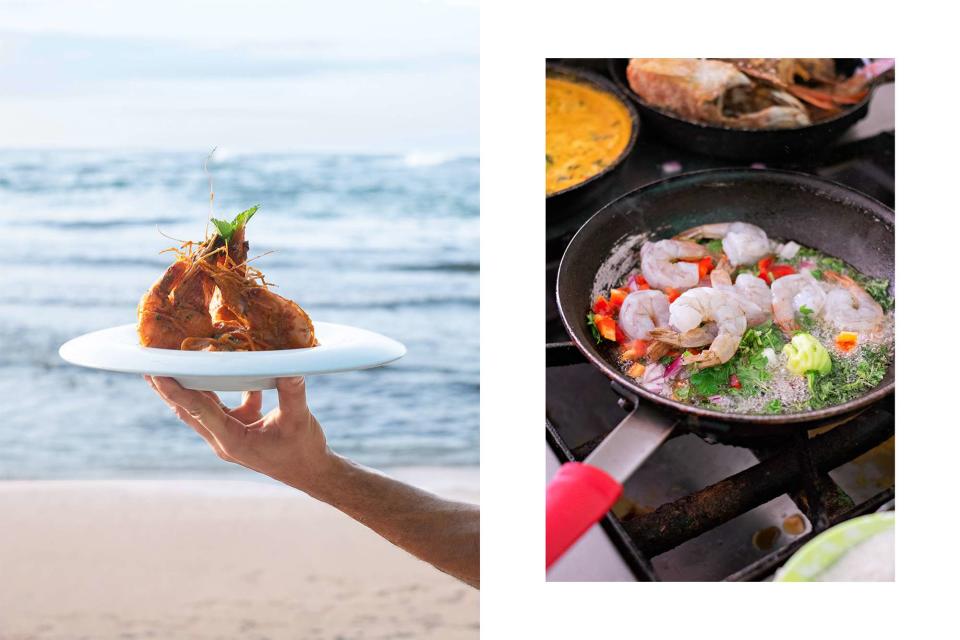
Ozzie Hoppe
From left: Carrot "noodles" with garlic shrimp at Salsa Brava; preparing a shrimp dish at Cahuita's Taste Caribbean Soul Food.It was nearly nightfall when I arrived at Puerto Viejo de Talamanca, the coastal town that I would call home during my first trip to Costa Rica. I checked in to my hotel, Satta Lodge, which sits in the jungle a short distance from the shoreline. What called me to this lush country was not the nearby sloth sanctuary, or the rainforests of Corcovado National Park, or even the alluring beaches. I was there to experience the nation’s Jamaican cuisine, forged by the community’s long history in Limón province, on Costa’s Rica’s eastern seaboard.
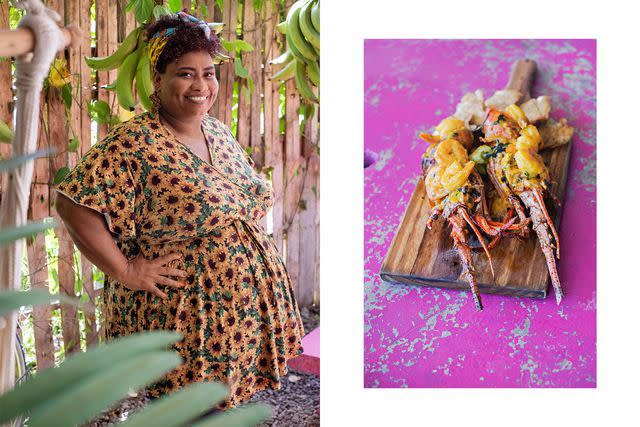
Ozzie Hoppe
From left: Chef Doria Sequeira Selles serving up smiles at Cahuita's Taste; lobster with shrimp at Cahuita's Taste.In the early 1800s, Caribbean fishermen began to settle along the same coast where, a century or so later, a young Marcus Garvey would begin his career as a political and racial justice activist. A massive project in the 1870s to construct a railway to transport coffee from the Costa Rican highlands to Limón attracted a large population of Jamaicans looking for employment. At the beginning of the 20th century, roughly 20,000 people migrated from Jamaica to Costa Rica to work at the notorious United Fruit Co. plantations, where, despite the repressive conditions, the newcomers were able to maintain their traditions, which influenced the region’s culture and cuisine.
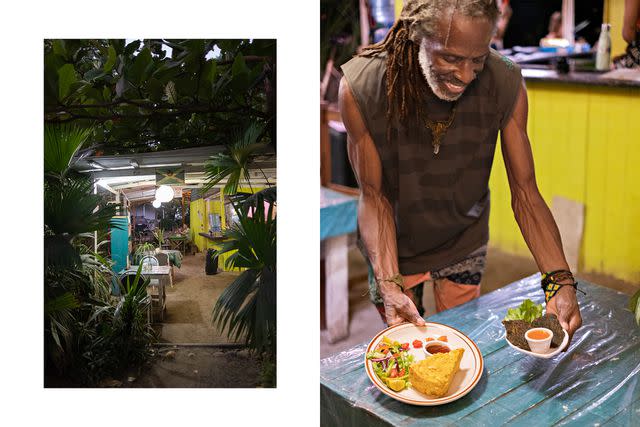
Ozzie Hoppe
From left: Jammin Vegan, in Puerto Viejo de Talamanca; Jammin Vegan owner Brian "Temps" Templeton.Today, many of these Jamaicans’ descendants live in other parts of Costa Rica, but their influence remains strongest in Limón, where Afro-Caribbean culture is woven into the fabric of the region. Green, black, and red, the colors of the flag Garvey created as a symbol of the Pan-Africanist movement he championed, are emblazoned across the walls of restaurants and bars, as well as on clothing and storefronts. Black women, integral to passing down culinary traditions, are the subjects of contemporary paintings and photographs. And “easygoing” is more a religious belief than a lifestyle approach.
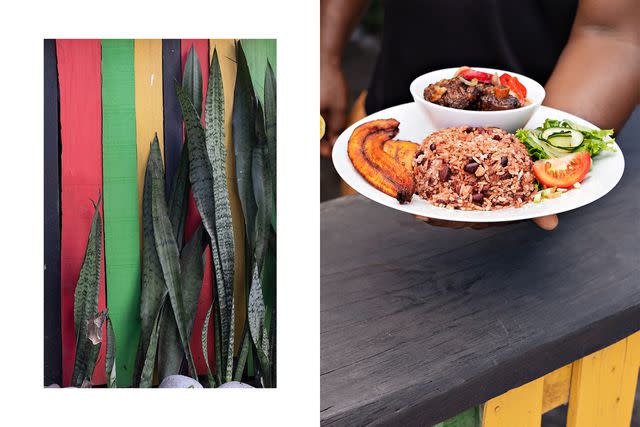
Ozzie Hoppe
From left: Details at Joe SnackPoint & Caribbean Food; oxtail with rice and beans at Joe.A bit weary from the five-hour drive from Juan Santamaría International Airport, I walked a few blocks from the lodge in search of my first meal in the country and landed at Morian Soda Caribeña. I enjoyed a generous serving of rice and beans (known in many parts of the African diaspora as “rice and peas”), vegetables, and plantains with a “small” piece of baked snapper that nearly filled the entire container. It was a meal that nourished my soul.
Over the next three days, I would explore the region by car, using Puerto Viejo de Talamanca as a base.
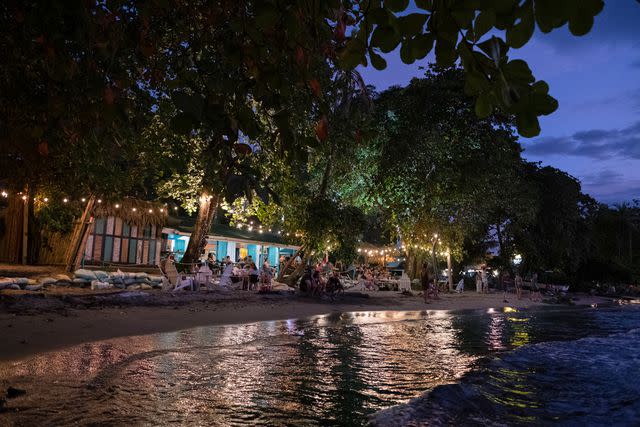
Ozzie Hoppe
Guests dining outside Salsa Brava.Day 1
After waking up to a soundtrack of exuberant howler monkeys, I drove 40 miles north up the coast to the town of Limón for another generous meal at Barbarita’s Caribbean Food. Owner Damaris Barrantes Mendez and his family pay homage to the region’s Jamaican influence through a daily buffet that includes the quintessential rice and beans, Caribbean chicken sautéed in a gently spiced coconut milk, and hash made with chayote, a summer squash.
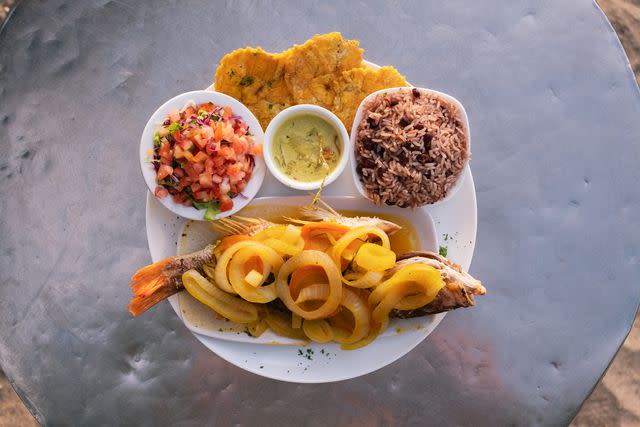
Ozzie Hoppe
Whole snapper with rice and beans, salsa, and patacones at Salsa Brava.My next stop was Cahuita, a vibrant village about 30 miles south of Limón, so I turned back and drove down the coast to meet chef Doria Sequeira Selles at her restaurant, Cahuita’s Taste Caribbean Soul Food. After indulging in a flight of inventive ciders including pineapple chile and Caribbean punch, I ordered a star-fruit cider with my langosta en salsa caribeña con camarones — lobster topped with plump shrimp, submerged in a bath of aromatic curry sauce. Thankfully, I had the Costa Rican staple, patacones, to soak it all up. These twice-fried slices of green plantain are one of many Caribbean and Latin American preparations of a fruit that’s integral to dishes of the African diaspora. The meal came to an end with a sweet, boozy rum cake, a local favorite that has become Selles’s calling card. Selles explained that she created the dessert to pay homage to the community central to her restaurant and identity. “We are Black people,” Selles told me. “No matter where we go in the world, we’re still Black. We are supposed to love our culture, and our traditions. We should be proud, because this is what we made.”
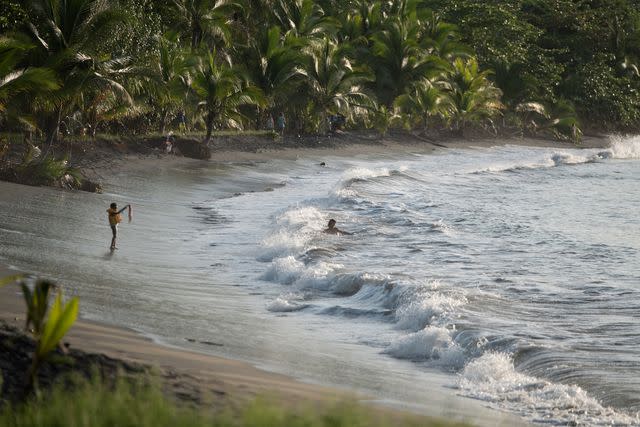
Ozzie Hoppe
Locals enjoying Playa Negra, in Puerto Viejo.Day 2
Back in Puerto Viejo de Talamanca, I sat on a barstool and had an early lunch beachside at Tamara’s Caribbean Restaurant, where I observed Rastafarians chopping it up with friends and travelers. I savored a creamy seafood soup made with generous amounts of shrimp and mussels — an oddly soothing treat on a hot summer day. I took a few last sips of my cuba libre while listening to the waves crash at Playa Puerto Viejo. Just along the shore sits El Sendero Beach Club, a relative newcomer to the area, and Salsa Brava Restaurant & Bar, a longtime institution known for its “ground provision” dishes, like cassava fritters and fried sweet plantains — and its reggae nights.
Wanda Patterson, who runs Salsa Brava with her family, cited “survival” and “identity” as the reasons she and her family continue to share their family’s Jamaican recipes at the club. “Ingredients like root vegetables and coconut milk and oil are influences from our parents and great-grandparents,” she said.
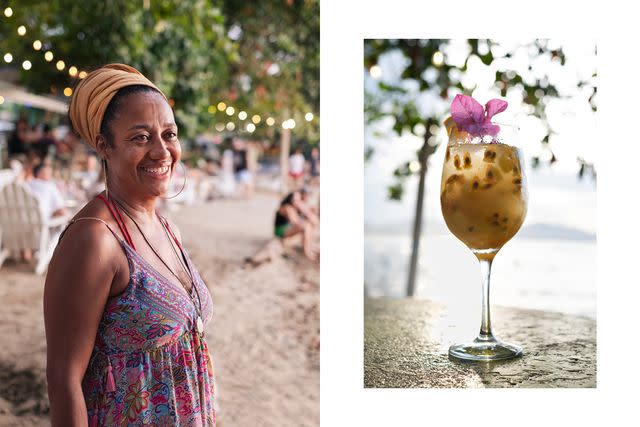
Ozzie Hoppe
From left: Wanda Patterson outside her restaurant, Salsa Brava; a passion-fruit cocktail at Salsa Brava.I jumped into the ocean while waiting for my sandwich, a journeycake (her hearty, house-made Caribbean bun) served with vegetables, refried beans, curry sauce, and pico de gallo. After wading in water peppered with shimmers of light, I was eager to have dinner at the restaurant Jammin Vegan, just a three-minute walk from the beach clubs. There, owner Brian “Temps” Templeton, whose Jamaican parents prepared traditional dishes for him while he was growing up in the U.K., makes vegan versions of those childhood recipes. I ate his interpretation of saltfish fritters: patties made of chickpea and wheat flours, chili, and garlic, studded with strips of briny nori and served with a gripping jerk sauce.
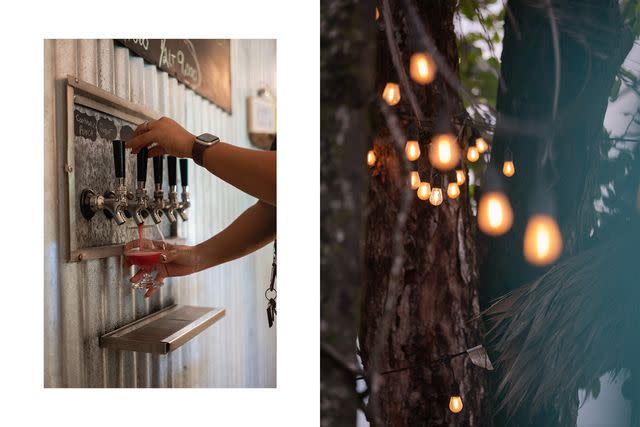
Ozzie Hoppe
From left: Cider on tap at Cahuita's Taste; string lights at Salsa Brava.Day 3
It felt weird to me to be in the Caribbean and not have oxtail, so I made it my mission to find the dish in Puerto Viejo before I left. At Joe SnackPoint & Caribbean Food, the tender meat was paired with rice and beans. Nearby at Cocomar Comida Caribeña, a refreshing watermelon juice jolted me back to life under a brutal Costa Rican sun.
Back in Limón, La Nena proved a worthy final stop. Looking out at the ocean, breathing in the salt-filled air, I was reminded of the ways this coast has been shaped by the Jamaican community. Conversations of joy and laughter blew across the wind — sustained, at most tables, over a plate of patacones and — what else? — rice and beans.
For more Travel & Leisure news, make sure to sign up for our newsletter!
Read the original article on Travel & Leisure.

